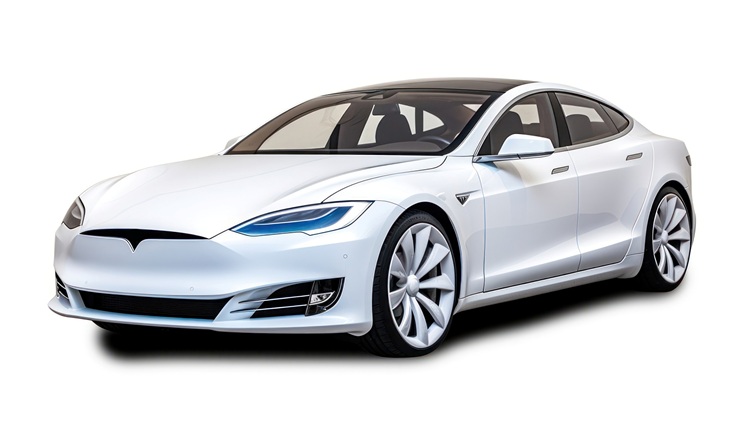SOAR Matrix for Tesla’s India entry Strategy & NVIDIA’s AI strategy
Learn to create SOAR Matrix with live business examples
In today’s high-stakes B2B landscape, predicting change isn’t enough — leading it is the mandate. Yet too often, most organizations approach strategic planning like a checklist driven activity.
Further, most strategic planning processes lay too much emphasis on aspects such as threats, weaknesses and risks. While it is important to evaluate the deficiencies and challenges, overly emphasizing on these leads to the creation of defensive strategies.

That’s where the SOAR Matrix flips the narrative.
SOAR—short for Strengths, Opportunities, Aspirations, and Results—is a strategic planning framework built for businesses that want to scale with intention and impact. Unlike its better-known cousin SWOT, SOAR doesn’t dwell on what’s broken—it amplifies what works and focuses on what’s possible.
It’s not just another planning tool; it’s a mindset shift for teams obsessed with client success, long-term value creation, and cross-functional alignment.
What is the SOAR Framework?
- Strengths: What the organization does well—core competencies, assets, and achievements
- Opportunities: External possibilities for growth, innovation, or market expansion
- Aspirations: Vision for the future—what the organization wants to become
- Results: Tangible outcomes that measure success and progress toward aspirations
Which organizations use SOAR Matrix?
There are many organizations that use SOAR matrix in their strategic decision making process. For example, Visa, John Deere, British Aerospace (BAE systems), US Army and many such large enterprises regularly use SOAR analysis. Many large consulting firms like McKinsey, Deloitte, PWC, Accenture, KPMG, etc, also this framework for their engagements.
Why leaders should use SOAR more regularly?
SOAR is useful because it doesn’t just analyze—it inspires. It’s built for leaders and teams who want more than situational diagnosis. By focusing on strengths and possibilities, SOAR aligns stakeholders, drives engagement, and fosters a growth mindset across organizations.
SOAR need not be used only a year during strategic planning. It should be part a leader’s tool-kit and should be during every day decision making. Here’s why it is a powerful tool for leaders:
- Encourages forward-thinking and innovation rather than deficiency mindset
- Builds shared vision and emotional commitment of the team
- Facilitates goal-setting rooted in core capabilities
- Strengthens organizational culture and collaboration towards a winning spirit
- Simple storytelling framework for leaders to influence stakeholders
When should B2B firms use SOAR?
SOAR is especially valuable in the following growth-critical scenarios:
- Cross-functional alignment for long-term goal
- Launching new product lines based on client feedback
- Entering new geographies or verticals with client co-creation
- Aligning cross-departmental teams with strategic account goals
- Conducting quarterly business reviews or renewal planning
- Repositioning brand for premium, value-based growth
- Designing CX programs tied to sales KPI
- Organizational transformation or culture change
- Leadership retreats and strategic offsites
How to Conduct a Client-Centric SOAR Analysis?
Conducting a SOAR analysis isn’t really difficult. All you need is good facilitation skills.
- Gather key stakeholders from diverse functions—strategy, marketing, operations, leadership, etc.
- If needed, you can involve key client decision makers too
- Host a facilitated workshop
- Ask 3 questions:
- What do we do best?
- What future excites us?
- What success looks like?
- Draft insights for each quadrant of the SOAR Matrix
As a part of our strategic engagements with our clients, we facilitate and help our clients develop SOAR matrix.
TESLA and NVIDIA Examples
Here are a few SOAR matrix examples of Tesla and NVIDIA that I have created for you to understand the concept better.
SOAR Matrix Example 1 : Tesla’s Entry into India
Here’s how Tesla’s move into India can be framed with a growth lens.
Strengths
- Globally recognized brand with premium EV tech
- Experience in setting up Gigafactories
- Advanced autonomous systems and battery innovation
- Charismatic leadership with global influence
Opportunities
- India’s EV market projected to reach ₹35 lakh crore by 2035
- Government incentives like FAME-II and import duty concessions
- Rising urbanization and affluent middle class
- Potential for Indian Gigafactory as Southeast Asia export hub
Aspirations
- Become the leading premium EV brand in India
- Build a Gigafactory with 30% local value addition
- Launch an affordable EV tailored for Indian consumers
- Revolutionize India’s EV infrastructure and perception
Results
- Launch India-specific EV model by 2026
- Onboard 8,000 EVs annually under new import quota
- Achieve ₹7,500 crore turnover within five years
- Maintain NPS score above 70% across service touchpoints
SOAR Matrix Example 2 : NVIDIA’s AI Chip Strategy
NVIDIA’s dominance is built on a powerful combination of hardware innovation, software integration, and ecosystem control. However, rising competition from AMD, Intel, and custom silicon players (like Google’s TPU) is prompting NVIDIA to accelerate its roadmap and deepen client entrenchment.
Strengths
- Market leadership with 70–95% share in AI accelerators
- Flagship chips (H100, A100) widely adopted by tech giants like Google, Microsoft, and Amazon
- Proprietary CUDA software ecosystem creates developer lock-in
- High gross margins (~78%) and strong brand equity
Opportunities
- Surging demand for generative AI and LLM training
- Expansion into inference chips and edge AI devices
- Strategic partnerships with cloud providers and enterprise AI platforms
- Growth in simulation, robotics, and Omniverse applications
Aspirations
- Sustain innovation leadership by releasing new architectures annually
- Become the backbone of global AI infrastructure across industries
- Lead ethical AI development and energy-efficient chip design
- Expand AI Enterprise software adoption across Fortune 500 clients
Results
- Reduce energy consumption per training cycle by 30% over 3 years
- Launch next-gen chip architecture (post-H100) by Q2 2026
- Achieve 85%+ market share in inference chips by 2027
- Grow AI Enterprise revenue by 40% YoY
Do you need professional help in this area? Contact us
#nilakantasrinivasan-j #canopus-business-management-group #B2B-client-centric-growth #client-centric-culture #Tesla #NVIDIA #SOAR-Matrix #Intel #Google
